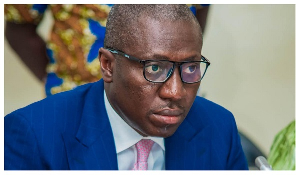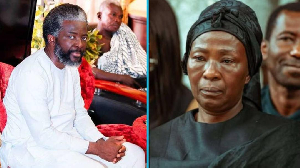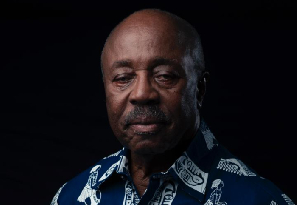What does he look like? Is he cute or he has a compressed lump on his face? Does he sport a pot belly? How does he succeed playing a school boy today, a cocoa buyer tomorrow and a psychiatric patient the next day? Soon he would morph into something indescribable to fish out the mystery behind leaders of mega church corporations in America who are gays by night and saints by day. He must have a very oily, funny face.
In Anas’ recent investigation into child neglect and other systemic abuses at the Osu Children’s Home, he was Pastor Abednago Apkabli. It took him seven months to complete his investigations, spying, recording and surreptitiously interviewing his subjects. He uncovered some dirty and disturbing truths, which he has made available for our consumption. Mr. E.T is not happy. So are other members of a committee who have accused the ace journalist of skewing his camera to record only the filth. Why did he fail to see any good thing at the Home? Is journalism only about recording the bad things?
Journalism is about finding and reporting news - truthfully and objectively. Are there any caveats? Hell no! What makes news, then? Would it be news to report the efficient supervision of kids at the Home and the maintenance of a healthy eating regime? The assumption we have is that kids in a care facility would be cared for by people who are paid to care for them. We would live on this assumption until a child at the facility wins an international award or a supervisor rapes one of them. Do journalists have an obligation to report the fine treatment at the facility prior to the rape? The fine treatment was the assumption until news of the rape broke. The rape now becomes news. There, our obligation is to investigate previously unreported rape cases and other forms of abuse.
Gotchya journalism seems to be what investigative reporting is about. In the present case, Anas claims he was charitable enough to have deselected some of the dirty files in his investigation portfolio for reporting. He had observed that a structure at the Osu Home had been converted into a brothel where folks engaged in interesting rendezvous. Perhaps he spared the Home that bit of news because it didn’t have a direct impact on the wellbeing of the children. There were other bits he didn’t want to include in his report.
When is the truth too much to bear? A member of the Committee probing Anas contends that if a journalist makes a particular organisation in the papacy his agenda, nosing around their corridors with an itchy curiosity, looking only for who does what wrong and who does not do what right, he would find something uncomplimentary to report. So, maybe he shouldn’t go looking for only the bad things; he should also check out the good stuff. And when reporting his story, he should juxtapose the good with the bad. Investigative reporting seeks to fish out the bad, not to tame it in the eyes of the good.
Once again, we are at that uncomfortable juncture where we have to answer what responsible journalism is all about? When you have a sickness waiting, you look for the cure. Otherwise, why should the dodgy past of an efficient public official cause him to resign? At any rate, when we set out to investigate an organisation, we are not interested in their lunch; we want to know how much they spent on it and who ate too much.
Kwesi Tawiah-Benjamin, Ottawa, Canada
quesiquesi@hotmail.co.uk bigfrontiers@ymail.com
Opinions of Tuesday, 28 September 2010
Columnist: Tawiah-Benjamin, Kwesi














